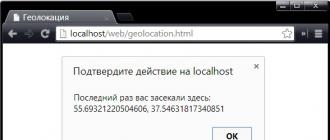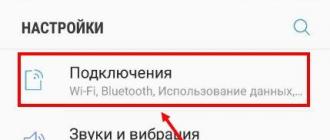The ISO file is usually confusing for beginners. What kind of format is this? How do I open it? What to do with the ISO file?
Don't panic. Opening ISO files is pretty straightforward. And all you need to do is install a program that reads ISO files. After that, you can easily open any of them with a double click.
ISO file is an image of a virtual disk created using special software. Simply put, something like an archive. It can store anything: music, movies, etc.
How to open ISO format? There are many programs for unpacking ISO files:
- Alcohol 120%;
- PowerISO;
- WinRAR;
- Nero, etc.
In this case, it is necessary to take into account what is inside the image. And already starting from this, choose the right software.
If it is a Windows distribution kit, then it does not need to be opened or installed. In this case, you can copy the licensed image to a bootable USB flash drive, and then reboot and start the PC (or laptop) through the BIOS. The installation of the operating system will then begin.
If it is a book divided into chapters, music (for example, all albums of your favorite artist) or certain documents, then in this case you can open an ISO file in the truest sense of the word.
- free (Lite version only);
- takes up little space;
- simple and straightforward to use.
How to open ISO file on Windows 7?
First, let's look at how to open an ISO file on Windows 7 (it also works for XP). Windows 8 and 10 are described below.
So, Daemon Tools is a free program for reading and unpacking ISO files. You can download it from the office. developer site (link).
It is very easy to use this program. When you install it, all ISO files will automatically open through it. Double-click on it with the left mouse button, after which the autorun window will immediately appear. Select the item "Open folder", and then look at the situation.
If such a window does not appear, it is possible that autorun is disabled for you. In this case, open "My Computer" and manually launch the virtual disk (RMB - Open).

If it's a game, run the setup.exe installation file. If it's a movie, music or something else, then just open them. Or copy it to any other folder on your computer (for convenience).
You can also open Daemon Tools and add an image by specifying the path to it. Or just drag the file into the program window. And then double-click on it (or press RMB and select "Mount").

After finishing installing the game or watching a movie, you need to delete the ISO file. Or rather, unmount it. This can be done in 2 ways:

After that, the virtual image will be deleted.
There is also another way to unzip the ISO file without Daemon Tools.
How to unzip an ISO file?
Daemon Tools is a specific program that not all users have installed. But WinRAR or 7-Zip probably everyone has. Therefore, if you are too lazy to install another program, you can simply extract the files from the ISO using the archiver.
It is very easy to do this:

Note: if the archiver is not in the list, then click "Select program" and look for it in the extended list.

If it is not there, then click the "Browse" button, find the archiver folder and select the WinRAR.exe installation file.

This is how you can unpack an ISO file without third-party software.
How to open ISO file on Windows 10 and 8?
Which program to open the ISO file on Windows 8 or 10? In this case, you don't have to install anything. After all, you can run it without extraneous software. All you need is to select the file and double-click on it with the left mouse button. After that, the image will be mounted and the autorun window will start. Don't forget to unmount it in the end. To do this, open "My Computer", select the virtual drive, right-click and select "Eject".
That's all. Now you know how to run an ISO file on Windows 7, 8 and 10. And if you download movies or games with this extension again, you can easily open them.
Let's say you've downloaded a movie, game, or video from the Internet. Everything went well, the download process is complete and you are trying to open the file in anticipation of the upcoming rest. But it does not open and, in addition, it does not have the .exe format or the .avi video format, which is usual for games, but instead has the .iso extension, which is unclear how to open it.
So how do you open iso files, which are also called virtual disk images?
An .iso file is a digital image of an optical disc (either a copy of a real CD / DVD disc or an artificially created disc image).
Considering all the amount of software that currently exists in the Internet space, it is quite difficult to choose a simple, convenient and most suitable program for the set goals. A similar situation is observed with programs for launching and opening .iso files. We have selected five programs that, in our opinion, will be most suitable for solving the tasks at hand. Let's look at how to open an iso file using each of these programs.
WinRAR
One of the simplest programs to open iso files is the well-known WinRAR archiver. Almost all versions of the Windows operating system include this program in the standard software set. We will not describe all the properties of the archiver, we will consider only the property we need - opening files that are disk images.
Using the program is quite simple: right-click on the .iso file. A context menu will open in front of you, in which you need to find the "Extract" tab.

The file is automatically opened through WinRAR, which offers a choice of where to extract all content from the disk image. After that, it remains only to wait until all the information contained in the .iso file is downloaded to the location you specified.

Daemon tools
As for Daemon Tools, we have it - there is a more detailed procedure for working with this popular program.
Another program that allows you to open and read disk images. It is an emulator that creates virtual drives on a computer, through which virtual disk images with the .iso permission are opened. In other words, the program "tricks" the computer into recognizing the .iso file as a disc in the CD / DVD drive.
We will not describe all the subtleties of working with Daemon Tools, we will only consider how to open an iso disk image using this utility:

As the name of the program suggests, it is specifically designed to work with files that are disk images. It is quite simple to work with it. Let's look at the process of opening and playing an .iso file in several steps:

Alkohol 120%
Quite a popular and well-known program for opening iso images. It can be used to launch or play the contents of .iso files. It should be noted right away that the program is more difficult to use for inexperienced users and to play files it is necessary to perform an order of magnitude more actions than in previous programs. In addition, the program is paid, and for permanent use you need to buy a licensed version.
Let's see how to use Alkohol 120% to open disk images:

Power ISO
Power ISO is a small, easy-to-use emulator program for playing disc images. It is an extended version of the Ultra ISO program that allows you to play not only .iso files, but also other image files that have the permissions .bin, .mdf, .mdl, .md2-5, etc. The principle of the program is exactly the same as that of Ultra ISO, so we will not re-examine the steps required to open the desired file. We just repeat the same steps and in the same order as in the Ultra ISO program.
Other programs to open .iso files
In addition to the above programs, you can use others. As a rule, other programs are not so convenient for inexperienced users, or there is no Russian version of the program, or the free version is distributed only for a certain time. However, if there is no Internet access, but the software allows you to choose several options for opening .iso files, you can use programs such as ISOBuster, Roxio Easy Media Studio, WinISO or Gilles Vollant WinImage.
The question of opening some types of files constantly arises among computer users, since not every extension is supported by the standard set of programs preinstalled in the operating system.
What are ISO files for?
My acquaintance with ISO files began at a time when it was a big problem to find programs on the Internet, and low speed and expensive traffic put an end to any attempts to download online.
People used disks and actively copied them from each other. There was one problem with this process - many disks were protected. Games did not work without a disc inserted into the CD or DVD drive, and autostart was required to install programs. In short, you couldn't just take and copy the files - you needed the disk itself.
During this period, programs appeared that imitated a floppy drive, creating its virtual analogue, and the files with which they worked received the ISO extension.
An ISO file is an image file of a CD or DVD disc containing in a compressed form all the data that is present on its physical original (optical disc). In addition to storing a disk image, the use of files of this format allows you to create an exact digital copy of the original by writing the data to a blank CD-RW or DVD-RW.
Most often, ISO files are used to distribute large assemblies of programs, or for versions of bulk paid products such as Windows, Microsoft Office, Photoshop, games, etc.
Programs that open ISO files
Two types of programs are used to open image files - archivers and disk drive emulators.
1. Archivers
These are programs that work with archive files. The main purpose of archives is to compress information or combine a large number of different files into one, so that it is more convenient to transfer it somewhere. These include WinRar, 7Zip and a few others.
The structure of the ISO file is identical to other archive formats, therefore, it is supported by the above archivers.
2. Emulators of CD / DVD drives
The purpose of these programs is not to work with files inside disk images, but to create virtual disks and mount image files (ISO) instead of physical storage media. Emulators are not designed to edit or work with individual files within an image.
How to open an ISO disc image file with WinRar?
In the article "" I already talked about this archiver and its capabilities, so if you decide to get acquainted with it in more detail, go there. We are now interested in how to open an ISO with it.
Since your ISO files do not have a typical WinRar icon in the form of a stack of books, I believe that you do not have an archiver or this file type is not included in its settings as a characteristic one.
1. If the archiver is not installed
You need to download it from the official site - win-rar.ru/download/
After starting the installation file, you will be asked what files to associate with WinRar. If you want to automatically open ISO files with this program, then check this box.

Now all image files will have a corresponding icon and will be automatically opened by the archiver when you double-click.

The program allows you to make changes to the contents of the archive - delete, add and edit files.
2. If WinRar is already installed and ISO does not open
The files are marked as unrecognized, which means that the files are not associated with the program. In this case, it is possible to manually select WinRar when opening a file or change the program settings so that it understands ISO by default.
To change the settings, run the archiver. Press the keyboard shortcut Ctrl + S or in the top menu select the "Parameters" tab and in it "Settings".

In the installations, we need the last tab, codenamed "Integration" - in it is hidden the cherished plate with the types of associated files. We put a tick in front of ISO and click "OK".

We have figured out how to open the file to extract the required data from it and make changes, now let's move on to using it as an image.
How to run an ISO file with Daemon Tools Lite
To work with image files for their intended purpose, you can use not only this program, there are a number of applications that create virtual disks and use ISO format images, free versions of each of them are approximately identical in capabilities and user interface.
I am comfortable using Daemon Tools Lite because it is officially free (no need to pay, look for pirated versions and various cracks), and, most importantly, I am used to it.
Program installation
The official site for downloading the application - daemon-tools.cc/rus/products/dtLite
You download the installation file from there, when you start it, you will be asked to install a free version of the program with advertising or pay a small fee to use a clean product.


During the installation, they may ask a few more questions (depending on the version of the program, something changes). In particular, you can choose which shortcuts to put in the system, whether to allow the transfer of statistics data, and which files are automatically associated with this application.

During installation, suggestions for installing software for different types of controllers may appear - they are not required, but may be useful.

First start
The first launch of the program will take place immediately after installation, if you do not refuse this action by unchecking the checkbox. When you start it for the first time, Daemon tools will prompt you to scan all your hard drives (HDD) to find suitable files (ISO and other related files). I recommend unchecking all unnecessary checkboxes, leaving only ISO.

At the end of the scan, the main program interface will open, where the image files that were found during the scan will be located in the central part.
Program interface
At the top right is the search box and "+" to search and add new images.
At the bottom there are icons of active virtual disks, and on the left there is a menu for management (which you can do without).

In order to launch the ISO file with the Daemon Tools program, you need to select it with the mouse and drag it to the virtual disk in the lower panel. The image will be instantly mounted into the drive and autorun will occur, if it was provided by this file.
All virtual disks are treated as normal by the system and are displayed in the "My Computer" list.

You can enter such a disk and navigate through the folders, as with a regular disk.
How to enable multiple drives at the same time
Daemon Tools can open several ISO files at the same time, mounting images into different virtual disks. This means that it is not necessary to extract one file before installing another - you can simultaneously run at least all the image files found.
To do this, when selecting the desired image file, do not drag it to the disk on the bottom panel, but click on the "Mount" link in the left menu.

In this case, a new virtual CD / DVD drive will be automatically created and the disk image will be installed into it.
Other useful features
The "Quick Mount" icon allows you to add images to the drive directly through the explorer, even if they are not in the list of found ones.
To extract files and to delete virtual disks, click on the disk with the desired letter with the right mouse button and select “Unmount” or “Delete”, respectively.
The paid version of the program has a lot of functions that are no longer associated with opening ISO images, but with their creation and burning to physical disks, if you need these functions, you can connect them by paying a certain amount.
We have finished with you for today, I hope that now you will have no problems opening ISO files and running other types of images.
Wandering around the Internet, you probably came across curious files that did not know how to open and what to do with them. These are files that end with (extension) ISO. It is simply an exact replica of a real disk. To start using it, you just need to create this image using a special program.
In this article, we'll look at the easiest way to open or extract content from the most popular disk image format - ISO.
Usually games are saved in this format. A disc or several discs with a game are inserted into the drive one by one, copied and packed according to the principle of an archive in ISO format. Now let's take a look at the simplest way to extract data from an ISO disk image.
To start download to your computer the necessary program for work with these file types. Open your Internet browser and enter the link to the site in the address bar http://www.daemon-tools.cc. Thereafter select "Downloads" from the top menu.

After the page is fully loaded, find on it a program called "DAEMON Tools Lite"... Below, after the description of the program, left-click on green button with the inscription "Download".

After that, a page will automatically open in your Internet browser, where you can find a link to download the Daemon Tools Lite program itself. On this page you will see a table in English with the number of downloads, the file name, the date the program was posted on the site, the list of supported operating systems and the MD5 key, with which you can check the integrity of the program file if necessary. After the table on the right, you will find a link to download the program with the inscription “Download».

Select the directory where you would like to save the setup file and click the Download button.
After completing the download process, open the folder in which you saved the installation file and double-click on it with the left mouse button.
The setup dialog box appears.

Click "Next", thereafter click the "Agree" button in order to confirm your agreement with the terms of use of this software, select "Free license" provided that you use this program for non-commercial purposes, and again click "Next". After that, you will see a window with the choice of the initial parameters of the Daemon Tools Lite program. If you do not want to install Yandex.Bar for yourself and make Yandex the default site in your browser, then uncheck the boxes "Install Yandex.Bar", "Make Yandex home page" and "Set Yandex as default search".

It is better to leave the rest of the settings as suggested by the installer. Click "Next". Select the installation path for the program and click install button. After completing the installation process and creating virtual drives to emulate disk images click the "Finish" button, leaving while ticking “RunDaemonToolsLite”And“ Submit anonymous usage statistics ”.

After installation, you will need to open the programDaemonTools, which shortcut you can find on your desktop. Your computer should have detected a new connected CD-Rom that is virtual to run ISO images. It is in this directory that all the information that is stored in the disk image after you mount it will be displayed. Once launched, a small icon in the form of a small blue lightning bolt in a white circle will appear in the tray in the lower right corner of the screen.

In order to launch a virtual disk image in ISO format, you must click on this icon with the right mouse button, hover over the item "Virtual drives", then move the cursor to the drive that the program created on your system, then select the item "Mount form…".

After that, you will see a dialog box in which you will have to select the ISO file, the contents of which you want to view. In our example, this is a disk image with the Rules of the Road. Select the file and click the "Open" button.

After the message "Mount disk ..." disappears from the screen you will be able to view the contents of yourISO image in that drive on the systemthat the program assigned. In our example, this is drive F: \\

In order to unmount the disk image, that is, remove the contents from the virtual drive, you must click on the program iconDaemonTools right click, in the context menu select the item "Virtual drives", Further hover the cursor over the drive which the program created on the system, and select "Check Out". This operation is the same as pressing the eject button on a real laser disc reader.

That's all. Good luck.
By the way, here's how it is created in!
An ISO file is an image of a CD or DVD disc. These files are used to create an exact copy of the data on the disk. In this article, we will talk about how to unpack an ISO file and access its contents.
If you need to unpack an ISO file, then the easiest way is to use any archiver. As an example, we will demonstrate how this is done using the 7-Zip example. You can use any other archiver you like. For example, you can use WinRAR.
So, in order to unpack the ISO file you need to right-click on the ISO file and select the menu item "7-Zip - Open Archive".
As a result, you will see a 7-Zip archiver window with the contents of your ISO file. From this window, you can drag files to the folder you need. But, this way of unpacking will take longer. To unpack as quickly as possible, click on the "Extract" button.


After that, the process of unpacking the ISO file will begin. The time required to decompress depends on the size of the ISO file and the performance of your computer.

After unpacking is complete, all files from the ISO file will be in the folder of your choice.
Unpacking an ISO file with UltraISO
It is a professional tool for working with ISO files. With this program you can create, mount, unpack, and perform many other actions with ISO files. UltraISO is a paid program, but you can use the Trial version.
In order to decompress an ISO file using UltraISO, you need to launch UltraISO and. This can be done using the button on the toolbar or the "File - Open" menu. The shortcut CTRL + O also works.

After you have opened the ISO file, the UltraISO program window will display all the files inside this disc image. In order to unpack them you need to select all of them and right-click on them. In the window that appears, select the "Extract to" item.

Unpacking ISO file with Daemon Tools Lite
You can also mount the ISO file as a virtual disk and then copy the files from it. To do this, you can use Daemon Tools Lite or any other disk mounting program.
To mount an ISO file, just open it. If you have the latest version of Daemon Tools Lite installed, the virtual disk will be mounted automatically.

After that, open the "My Computer" window, find the virtual disk there and also open it.

After that, you will see the files from the ISO image, and you can copy them to the folder you need.
It should also be noted that in Windows 10 you can mount ISO files without using third-party programs like Daemon Tools Lite.






